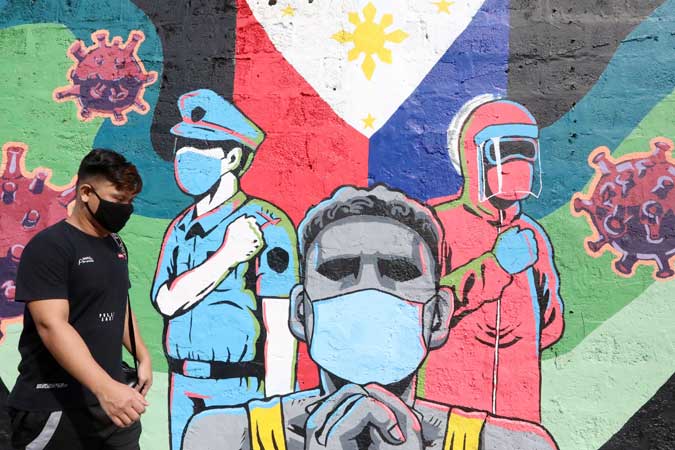Tough call not to ease quarantine restrictions come March 1. Businesses and consumers have been hurting, and the economy is in the doldrums. But the number of daily cases of COVID-19 (coronavirus disease 2019) seems to be on the uptrend, again. So, I can understand why the President opted not to shift the entire country into the most lenient quarantine status just yet.
He wants more time to decide on the shift, he said. At least, until after the government starts the COVID-19 vaccine rollout. But while he may seem to have been guided by science and data on the matter, and his decision seems to appease a number of medical experts, I suspect the President is really acting more on gut feel, and perhaps, just being practical.
Question is, can Modified General Community Quarantine or MGCQ really wait until after the vaccine rollout starts? I doubt Socioeconomic Planning Secretary Karl Chua would have suggested the shift by March 1 unless it was absolutely necessary. MGCQ will perhaps allow government economic managers some breathing space, by shifting the burden of boosting economic activity more to the private sector.
Data indicate an uptrend in COVID-19 daily cases. Data also indicate that the economy is in a worse state than previously forecasted. But I have not seen data that indicate the repercussion or consequences of delaying nationwide MGCQ by two to three months. Again, if the shift is not crucial, would NEDA (National Economic and Development Authority) have recommended it? Would Metro Manila mayors have pushed for it?
My concern is that the President has opted to link his decision on the matter to the vaccine rollout, which does not seem to have a definite timetable. Meantime, everybody is waiting to exhale, so to speak. Businesses, investors, consumers, and everybody else will be holding their breaths for another two to three months, maybe even more.
Public health and safety get priority over the economy, and perhaps rightly so. However, public health and safety cannot easily be assured unless the government is prosperous enough to spend on programs, and unless businesses are profitable enough to actually pay taxes, or to spend for health and safety programs themselves. It takes money to implement even minimum health standards and protocols against COVID-19.
CNN Philippines reports that health workers are relieved by the President’s decision, since it gives them more time to prepare for the shift to MGCQ, when COVID cases are anticipated to go up. Parents are perhaps just as relieved by the President blocking the initiative to allow face-to-face classes for now, or his decision not to allow younger teens to leave their homes.
Without doubt, there are risks to shifting to MGCQ prior to the vaccine rollout. But, I believe, it is likewise risky to delay MGCQ until after the vaccination program starts. For the simple reason that no one really knows when vaccines will arrive, and when and how the government will distribute them. Perhaps the timetable should not depend on the vaccine rollout?
It is number crunching time for NEDA as well as all agencies involved in vaccine procurement and distribution. Decision-makers need reliable and credible data based on simulations and forecasts to estimate the consequences and implications of delaying the shift to MGCQ, and making the vaccine program the precondition to it.
We also need to see data and estimates from health/medical and statistical experts, from scientists, on the consequences and implications to public health and safety. Decision-makers need to see everything in numbers, and all data and information that serve as bases for decisions should be made public.
My take on the matter is that COVID-19 is not about to go away, and all we can do at this point is to live with it, while taking precautions. And while I am for the gradual and safe reopening of the economy, public health and safety should always come first. Of course, this is from the viewpoint of one who follows health protocols, and avoids unnecessary “exposure” by being more discerning as to when to go out, and to where.
For almost a year now, my family has managed to stick to only “essential” travel out of the house. And perhaps we have to wait for another year to pass before it is “almost” business as usual for us. But we count ourselves lucky that we can actually afford to avoid leaving the house unless absolutely necessary. Work and school can be done from home.
However, most people are not as lucky. In fact, an overwhelming majority of Filipinos need to go out of their homes to earn a living. To them, leaving the house is not an option but a necessity. Sadly, as we delay the shift to MGCQ, it remains difficult for many to resume full-time work, and earn sufficient wages to cover all their expenses. They, too, need a breather from lockdown.
While COVID-19 is a threat to their health, maybe they are more concerned with the quarantine’s threat to their livelihood and subsistence. With or without the vaccine, life must go on for them. The government is no longer in a position to assist them. And now with rising food prices, it has perhaps come to that point that they would willingly face COVID-19 and take their chances with it, just so they get a fair chance to fight poverty and hunger.
Marvin Tort is a former managing editor of BusinessWorld, and a former chairman of the Philippines Press Council

